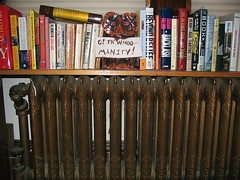Question by Raziel_angel: Does anyone know symbolism of Tarot cards?
Traditional art for the tarot cards are laden with symbolic imagery and I’m looking for in depth details. Tower with the lightning bolt for god’s wrath (Tower of Babel) is the sort of symbolism I’m looking for but with all the cards. Not the meaning of the cards but more along the lines of way the symbols and images are there. History of Tarot cards would be a plus. Any books or web sites?
Best answer:
Answer by halcon
http://www.aeclectic.net/tarot/
Have a go on the forums, meander round the site.
Also worth having a good look at 78 Degrees of Wisdom, a classic tarot book that doesn’t over emphasise interpretations, it talks a lot about the cards, and encourages you to learn them and make your own connections.
The Tower isn’t about “God’s wrath”, it’s about sudden and dramatic change in the main. The thing about tarot is that it is extremely individual. One starts by looking at the cards, and seeing whether they mean anything to you. Books are good for beginners as they give basic interpretations, but there is so much more to it, that after a while you have to put the books away and go on instinct and intuition.
Halcon
Give your answer to this question below!

I can answer if you ask
email me privately graphael555@yahoo.com
out of the caves.
Well, the symbolism of tarot depends much upon which tarot cards.
Tarot cards were created in mid 15th century Italy for the Milanese court and consisted of two parts: a standard pack of Latin suited playing cards and a fifth suit of picture cards.
The Latin suited playing cards made their way into Europe from the Islamic Malmuks in the late 14th century. The Malmuk cards feature four suits of cups, coins, scimitars, and polo sticks. Polo was not played in Europe at that time, so this suit became batons.
The extra picture cards took as their theme a Christian triumph procession, hence their early name of trionfi, meaning triumphs and from which we get our word trump. And this is what they were, a suit of fixed trump cards for use in card games – games that continue to be played to this day. It is quite possible that these cards tell a Christian allegory of some kind but we just don’t have enough information to be sure or to speculate as to what it might have been. However, if you want to understand the images it is best to look at them in the context of when and where they were created.
For example, the Hanged man is featured suspended by one foot, often holding money bags. It Italy, this card was called the Traitor – because that is how Italians executed traitors, suspended by one foot and left to die slowly and publicly. However, there was also the practice of shame pictures – an artist would be employed to draw the likeness of someone who had betrayed a trust suspended this way, the picture would then be displayed publicly to shame the betrayer. It is worth noting that the most common subjects for these pictures were bad debtors – hence the money bags!
You mention the Tower and this is an uncertain card. Many early ppacks did not feature a tower but a burning building – it was sometimes called the House of the Devil.
In the early 18th century, German card makers began to make French suited tarot cards, replacing the trump designs with a range of subjects such as regional costume, animals, or landmarks. These designs have gradually become the dominant ones used for game play.
At the end of the 18th century, French occultists began to adopt the cards, believing them to have come from Egypt and representing their ancient wisdom. Consequently, they bagan to modify the traditional designs to better reflect their ideas. In the early 20th century, British occultists, adopting and building upon the French beliefs, began to radically redesign the cards, packing them with occult symbolism. Most occult tarot packs made for English speakers are based upon the symbolism of the RWS or the Crowley Thoth packs of this time.
Tarot symbolism is a BIG subject.